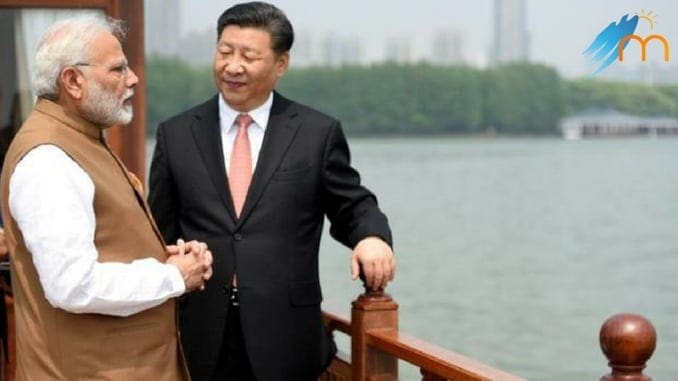
“When metal meets metal, there comes a ‘clang’ but the shrill depends on how did the two actually meet”
A genuine anecdote in context to the recent summit between the two stalwarts in the face of world power and economy: India and China, in the Wuhan summit of 2018 between the Chinese president Mr. Xi Jinping and the Indian Prime Minister Mr. Narendra Modi.
It is stated as an attempt “to exchange views on overarching issues of bilateral and global importance, and to elaborate their respective visions and priorities for national development in the context of the current and future international situation” by the Ministry of External Affairs, Govt. of India. But do the conditions prevail in accordance to the above stated. Let us dive deep into it.
WHAT DOES HISTORY HAVE TO SAY?
Well, it can be seen as one of the numerous attempts to pacify bilateral relations which might actually seem vague and go in vain as history has repeated itself in the years with chances in plenty. The history ranges its presence from October of 1954 when Mao Tse Tung, the Chinese Premier met the then Indian Prime Minister Jawaharlal Nehru and talked about every matter with a vision of a “unified Asiatic front” in the upcoming Cold War situation and the nation sang in unison the chorus of “Hindi Cheeni Bhai Bhai”. However, the friendly relations could not save the two nations from going to war twice, once in 1962 and once again in 1967.
DECISIONS PAVING THE FACE OF HUMANITY
Coming to the decisions taken in the summit, an array of negotiations and deals are going to be pivotal in changing the face of the relations between the countries. Both countries jointly agree to contribute in a positive and constructive manner in facilitating solutions for global challenges including climate change, sustainable development, food security etc. The two leaders agreed that as two major countries and emerging economies, India and China, given their vast developmental experiences and national capacities, should join hands to take lead in offering innovative and sustainable solutions to challenges faced by humankind in the 21st century. These include combating diseases, coordinating action for disaster risk reduction and mitigation, addressing climate change and ushering digital empowerment. They reiterated the importance of building an open, multi-polar, pluralist and participatory global economic order which will enable all countries to pursue their development and contribute to the elimination of poverty and inequality in all regions of the world. They spoke of their respective efforts to contribute to the regional and global economic development.
In context to the summit, an MoU has been mutually agreed where import taxes have been reduced for a couple of products by both of the countries.
BIPOLAR MISOGYNY
As has happened in most of the summits, the optimism has fallen dearth to the ever longing issues that are getting deep rooted through the past years of negligence of the Indian national bodies which clearly depicts the fear of eviction. Although these issues like border conflicts, Pakistan, terrorism etc. have been discussed but it has been like the meeting of negotiation that either mother of two fighting kids make them do mutually, where “accord with a smile for the world to know for the meantime” is the verdict of the hour and the next day are seen fighting for the same pencil on the same desk. Although they have negotiated to combat terrorism together, the preconceived and proven stance of China is to support the terrorist groups in Pakistan and enhance their nuclear power to prove their mettle in their pseudo Cold War situation with the USA, where India has been a constant supporter of the US.
Secondly, the talks on border conflict have been more or less the same as before. The two nations were unable to make any real headway on the standing issue of border conflict, however both countries released a press statement to seek a fair, reasonable and mutually accepted settlement. As no binding document was signed, these words may be worth less then a paper shield. This hit especially hard to the soldiers bearing the harsh conditions of the inhabitable Siachen, and Biafo glaciers, for which the border conflict resolution would have been especially helpful.

Be the first to comment